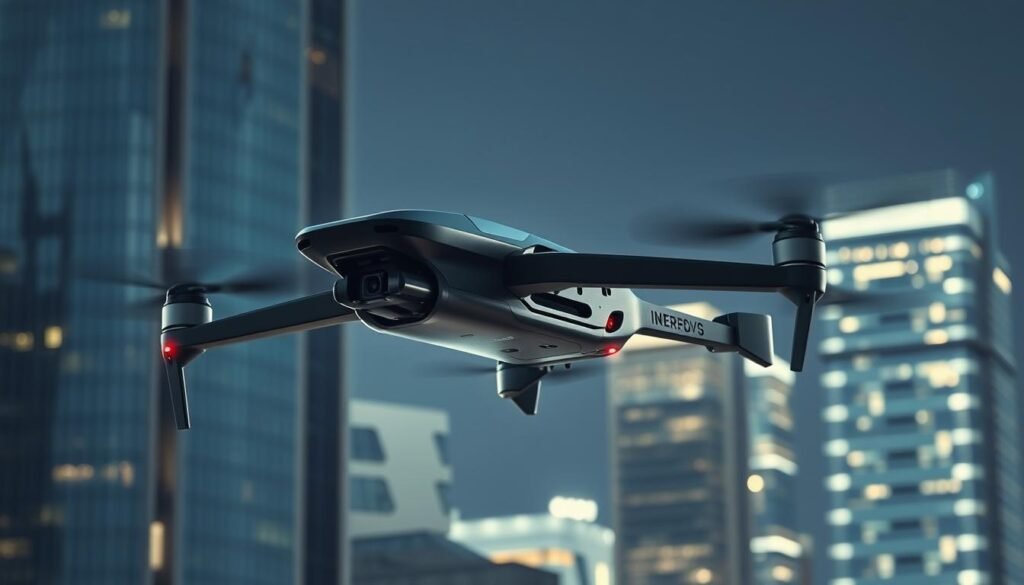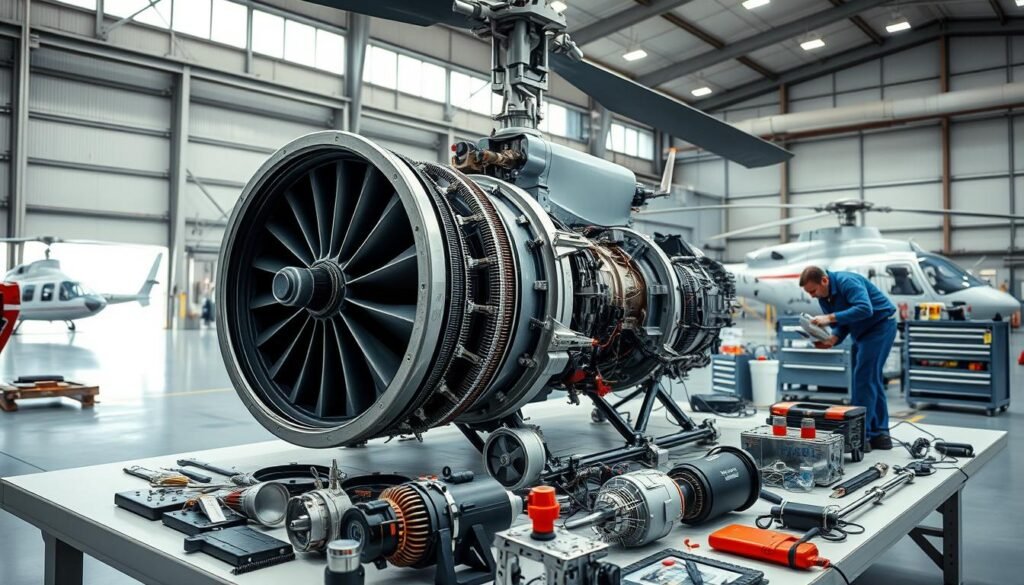Helicopters have long been essential tools in emergency response operations, providing rapid access to remote areas, transporting critically injured patients, and supporting disaster relief efforts. In recent years, advances in helicopter technology have further enhanced their capabilities, making them even more effective in life-saving missions. From advanced avionics and real-time communication systems to autonomous flight and increased operational efficiency, modern helicopters are playing an increasingly critical role in emergency response. In this article, we will explore how helicopter technology is revolutionizing emergency operations across various fields.
1. Faster Response Times and Greater Reach
One of the most significant advantages of helicopters in emergency response is their ability to quickly reach areas that are difficult or impossible to access by ground vehicles. This includes remote regions, mountainous terrain, and disaster-stricken areas where roads may be blocked or destroyed.
Key Advancements:
- Higher Speeds: Modern helicopters are capable of flying at higher speeds, allowing them to reach emergency sites more quickly, which is crucial in life-threatening situations.
- Increased Range: Advances in fuel efficiency and hybrid propulsion systems have extended the range of helicopters, enabling them to operate over longer distances without needing refueling.
- Vertical Takeoff and Landing (VTOL): The ability to take off and land vertically, even in confined spaces, makes helicopters ideal for responding to emergencies in urban or remote areas.
2. Advanced Medical Capabilities for EMS Helicopters
Helicopters play a critical role in emergency medical services (EMS), transporting patients from accident scenes or rural areas to hospitals equipped to provide urgent care. Advances in helicopter technology have improved both patient care and safety during transport.
Key Medical Advancements:
- Onboard Medical Equipment: Modern EMS helicopters are now equipped with state-of-the-art medical equipment, such as ventilators, defibrillators, and advanced monitoring systems, allowing paramedics to provide critical care during flight.
- Telemedicine Integration: Some EMS helicopters are equipped with telemedicine systems that allow paramedics to connect with doctors in real time, providing guidance on patient care while en route to the hospital.
- Stable Flight Systems: Fly-by-wire technology and advanced autopilot systems have made helicopter flights more stable, reducing turbulence and ensuring smoother rides for critically injured patients.
3. Enhanced Avionics and Navigation Systems
Navigation and flight control are vital for emergency response helicopters, especially when operating in challenging conditions such as poor visibility, inclement weather, or disaster-stricken areas. Modern avionics systems have made helicopter navigation more precise and reliable.
Key Technological Improvements:
- GPS and Satellite Navigation: GPS and satellite-based navigation systems provide real-time positioning, ensuring helicopters can accurately navigate to emergency locations even in remote or difficult terrain.
- Terrain Awareness and Warning Systems (TAWS): TAWS alert pilots to obstacles such as mountains, buildings, or towers, helping them avoid collisions during low-altitude flights in poor visibility.
- Night Vision and Infrared Cameras: Night vision and infrared cameras have revolutionized search-and-rescue operations by allowing pilots to see in low-light or obscured environments, such as during nighttime or in smoke-filled areas.
4. Real-Time Communication and Coordination
Effective communication and coordination are critical to the success of emergency response operations. Modern helicopters are equipped with advanced communication systems that allow them to stay in constant contact with ground teams, air traffic control, and medical facilities.
Key Communication Enhancements:
- Satellite Communication (SatCom): Satellite communication systems enable helicopters to maintain contact with command centers and emergency teams, even when operating in remote areas without traditional radio coverage.
- Data Link Systems: Data link systems allow helicopters to transmit real-time information, such as live video feeds, GPS coordinates, and patient vitals, to ground teams or medical facilities. This enhances coordination and decision-making during critical moments.
- Interoperable Radio Systems: Interoperable radio systems ensure that helicopters can communicate with different agencies, including police, fire departments, and emergency medical services, facilitating better coordination during multi-agency responses.
5. Autonomous Helicopters and Drone Integration
One of the most exciting developments in helicopter technology is the integration of autonomous systems and drones into emergency response operations. Autonomous helicopters and unmanned aerial vehicles (UAVs) can assist in various tasks, such as surveying disaster zones, delivering supplies, and even transporting patients in some cases.
Autonomous Technology in Emergency Response:
- Unmanned Helicopters: Autonomous helicopters are being developed to perform tasks such as delivering medical supplies, conducting search-and-rescue missions, and surveying disaster-stricken areas without risking human pilots.
- Drones for Reconnaissance: UAVs equipped with cameras and sensors can be deployed ahead of manned helicopters to assess the situation, locate survivors, or identify hazards. This allows for more informed decisions and safer operations.
- Supply Delivery: Autonomous helicopters can be used to transport supplies such as food, water, or medical kits to areas where human access is difficult, reducing the need for dangerous manned flights.
6. Improved Safety Systems and Crash Prevention
Safety is a top priority in emergency helicopter operations, and advances in safety systems have made helicopters more reliable and resilient in challenging conditions. These technologies reduce the risk of accidents, both for crew members and the people they are rescuing.
Enhanced Safety Features:
- Helicopter Terrain Awareness and Warning System (HTAWS): HTAWS provides pilots with detailed terrain data, alerting them to potential obstacles and preventing controlled flight into terrain (CFIT) accidents.
- Advanced Autopilot Systems: Autopilot systems can take over certain tasks during long or complex missions, reducing pilot fatigue and ensuring steady flight. In emergency situations, autopilot can help stabilize the helicopter during complex maneuvers.
- Crashworthy Seats and Structures: Modern helicopters are equipped with crashworthy seats and structures that can absorb impact energy in the event of a crash, increasing the survivability of passengers and crew.
7. Disaster Relief and Search-and-Rescue Missions
Helicopters are often the first response units deployed in disaster zones, where they perform critical tasks such as rescuing stranded individuals, delivering supplies, and assessing damage. Technological advances have made helicopters more effective in these roles, particularly during large-scale disaster relief operations.
Technological Impact on Disaster Relief:
- Aerial Imaging and Mapping: Helicopters equipped with high-resolution cameras and LIDAR systems can create detailed maps of disaster areas, helping responders assess the extent of damage and prioritize rescue efforts.
- Thermal Imaging for Search-and-Rescue: Thermal imaging technology allows helicopters to detect heat signatures from people trapped in rubble or hidden by smoke, increasing the likelihood of locating survivors in disaster zones.
- Long-Range Capabilities: Modern helicopters can fly longer distances, making them ideal for reaching remote areas that have been cut off from ground transportation due to natural disasters like floods or earthquakes.
8. Environmental Monitoring and Firefighting
In addition to search-and-rescue and medical services, helicopters are also playing a crucial role in environmental monitoring and firefighting efforts. Advances in helicopter technology have enhanced their ability to monitor and combat wildfires, floods, and other natural disasters.
Firefighting Helicopter Technology:
- Water Drop Systems: Helicopters equipped with water drop systems, such as Bambi Buckets, can carry and release large volumes of water or fire retardant to combat wildfires. These systems are becoming more efficient and precise, allowing for targeted firefighting efforts.
- Aerial Fire Surveillance: Helicopters equipped with infrared cameras can monitor wildfires from the air, even through smoke, helping firefighters track the spread of the blaze and coordinate ground efforts.
Conclusion
Helicopter technology has revolutionized emergency response operations, making it possible to save lives more efficiently, quickly, and safely. From faster response times and advanced medical capabilities to autonomous systems and improved safety features, helicopters are essential tools in modern emergency services. As technology continues to advance, helicopters will become even more integral to emergency response, offering new possibilities for search-and-rescue missions, disaster relief, and medical transport. These innovations ensure that helicopters will remain at the forefront of life-saving operations for years to come.
Related Articles
- Understanding Helicopter Vibration Analysis: Key to Preventing Major Failures
- How AI and Big Data Are Shaping the Future of Helicopter Maintenance
- Upgrading Helicopter Systems: When and Why to Modernize Your Aircraft
- The Importance of Regular Avionics Checks for Helicopter Performance
- Helicopter Maintenance in Extreme Weather Conditions: What Technicians Need to Know
More from This Category
- Digital Cockpits: How Modern Technology Is Transforming Helicopter Navigation
- The Role of Predictive Maintenance in Helicopter Fleet Management
- Innovative Materials in Helicopter Design: Enhancing Durability and Efficiency
- How Helicopter Technology Is Revolutionizing Emergency Response Operations
- Rotor Blade Maintenance: Why It’s Critical for Safe Flight
- The Future of Autonomous Helicopters: What Technology Holds for the Aviation Industry
- Helicopter Engine Maintenance: Best Practices for Longevity and Efficiency
- How Advances in Avionics Are Improving Helicopter Safety and Performance
- Routine Helicopter Maintenance Checklist: What Every Pilot Should Know
- The Evolution of Helicopter Technology: From Early Models to Modern Innovations



